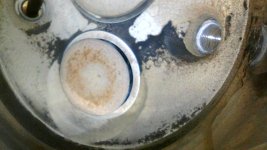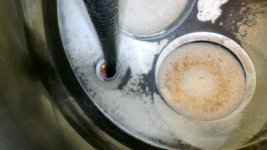I have an IO360M1B with standard compression, running the SDS electronic ignition and injection, coming up on 1300 hours mostly trouble free, running 93E10. For the last couple hundred hours my #3 cylinder has been slowly getting lower on CHT and higher on EGT, so that in cruise now (WOTLOP) it runs about 30-40 degrees cooler on CHT and about roughly 40 degrees hotter on EGT, which would normally indicate that the mixture is off or the exhaust valve is leaking. Trouble is, my GAMI spread on all 4 cylinders is 0.0 - with SDS injection I can individually trim them however I want, and they are bang on. The ignition is right, I've checked timing (29 degrees when at altitude WOTLOP, 25 degrees lower and richer), changed plugs, recently replaced the wires, the problem is still there, and only the #3 cylinder has changed - if it was the coil or the trigger, it would affect more than one cylinder. Borescope looks beautiful, no sign of a burned exhaust valve, I recently lapped the exhaust valve in-situ, no change. Compression on that cylinder is 78/80 just like it always has been.
I'm running out of things to look for. I can swap the CHT/EGT with another cylinder and check for instrumentation problems, though it's unlikely to have two sensors vary like that at the same time. It's almost like the exhaust valve is fine but opening too soon - could this be a pushrod issue?
Attached are two pics of the exhaust valve.
I'm running out of things to look for. I can swap the CHT/EGT with another cylinder and check for instrumentation problems, though it's unlikely to have two sensors vary like that at the same time. It's almost like the exhaust valve is fine but opening too soon - could this be a pushrod issue?
Attached are two pics of the exhaust valve.
Attachments
Last edited:







